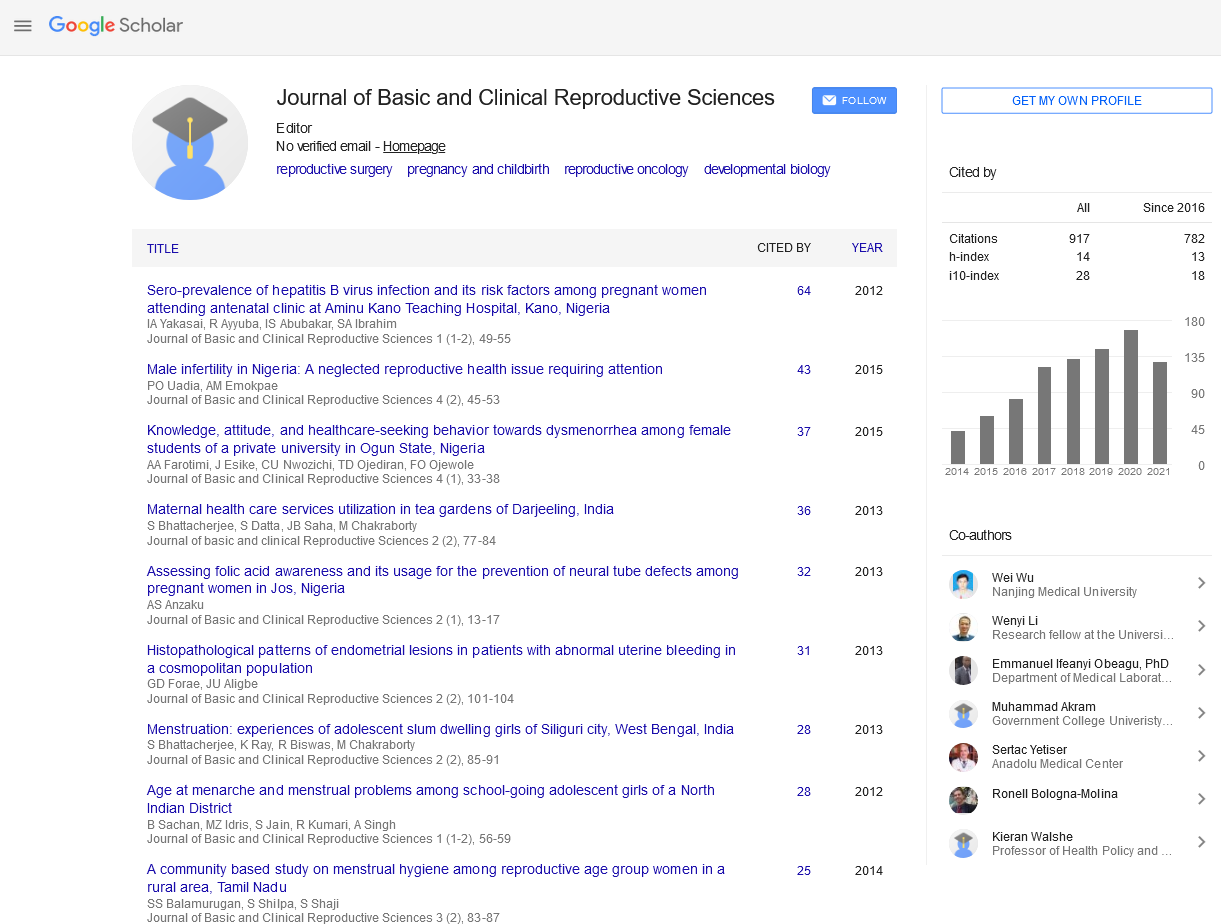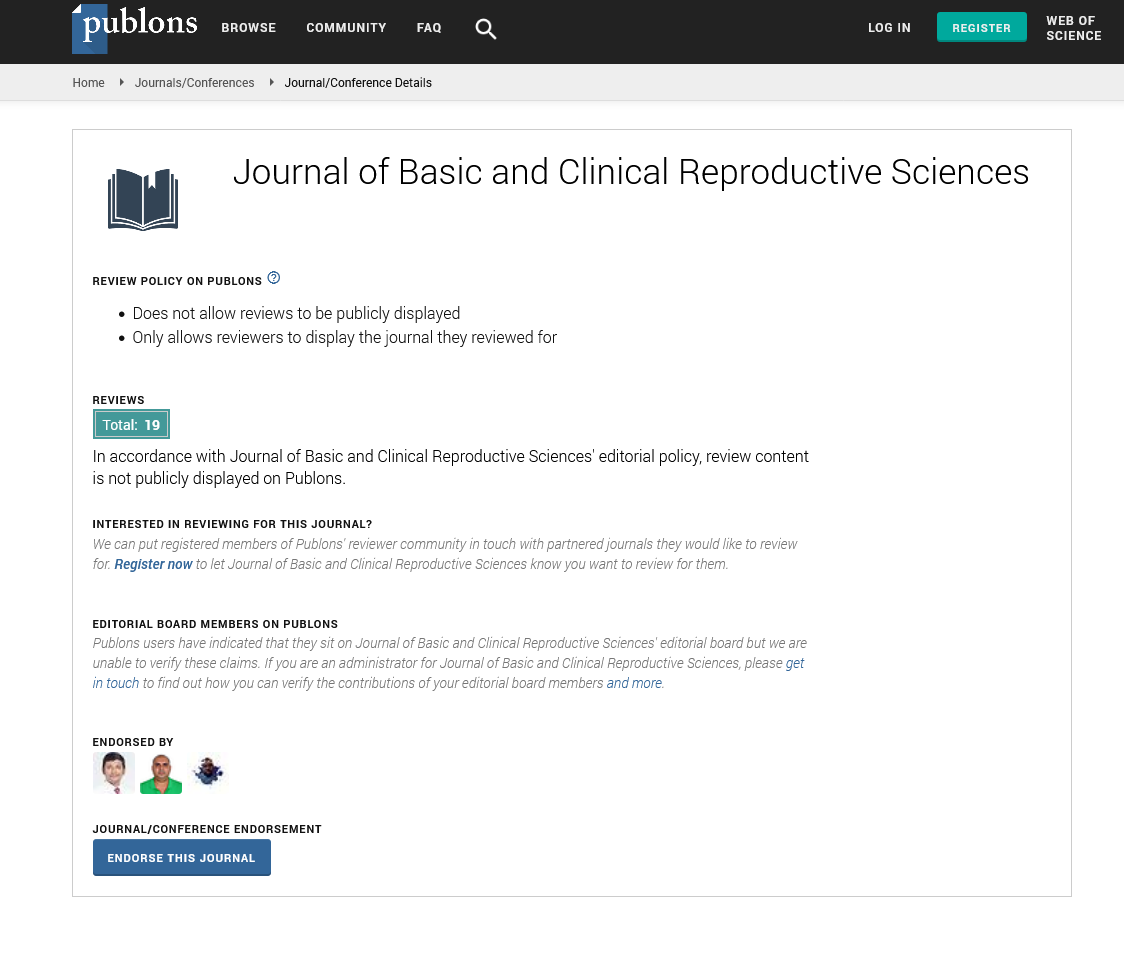Commentary - Journal of Basic and Clinical Reproductive Sciences (2023) Volume 12, Issue 5
Molecular and Cellular Dynamics of the Menstrual Cycle in Women’s Health and Reproduction
Received: 25-Sep-2023, Manuscript No. JBCRS-23-121566; Editor assigned: 27-Sep-2023, Pre QC No. JBCRS-23-121566 (PQ); Reviewed: 11-Oct-2023 QC No. JBCRS-23-121566; Revised: 18-Oct-2023, Manuscript No. JBCRS-23-121566 (R); Published: 25-Oct-2023
This open-access article is distributed under the terms of the Creative Commons Attribution Non-Commercial License (CC BY-NC) (http://creativecommons.org/licenses/by-nc/4.0/), which permits reuse, distribution and reproduction of the article, provided that the original work is properly cited and the reuse is restricted to noncommercial purposes. For commercial reuse, contact reprints@pulsus.com
Description
The menstrual cycle, a hallmark of female reproductive health, is a complex and intricately regulated biological phenomenon. Beyond its primary role in fertility, the menstrual cycle serves as a barometer of overall well-being and a window into the intricate interplay of hormones and physiological processes. The menstrual cycle unfolds as a finely orchestrated sequence of events, governed by hormonal fluctuations and physiological changes within the female reproductive system. This section delves into the phases of the menstrual cycle menstruation, follicular phase, ovulation, and luteal phase exploring the nuanced interplay of hormones such as estrogen and progesterone. A detailed understanding of these physiological processes forms the foundation for unravelling the intricacies of the menstrual cycle.
Regulation of the menstrual cycle
The endocrine system plays a pivotal role in orchestrating the menstrual cycle, with the hypothalamus, pituitary gland, and ovaries acting as key players. This section elucidates the regulatory mechanisms governing the menstrual cycle, emphasizing the feedback loops that modulate hormone production and the precise timing of events. A thorough comprehension of this regulatory framework provides insights into the delicate balance maintaining reproductive health. While the average menstrual cycle lasts around 28 days, significant variability exists among individuals. This section explores the factors contributing to cycle length variations, addressing what constitutes a “normal” menstrual cycle. By acknowledging the diversity of menstrual patterns, this research seeks to demystify misconceptions and foster a more inclusive understanding of menstrual health. The menstrual cycle is susceptible to a myriad of external and internal influences, ranging from lifestyle factors to underlying medical conditions. This section examines the impact of stress, exercise, nutrition, and environmental factors on menstrual regularity. Additionally, it delves into the influence of age and reproductive milestones, providing a holistic perspective on the multifaceted nature of menstrual cycle dynamics. Beyond its reproductive implications, the menstrual cycle serves as a valuable indicator of overall health and well-being. This section explores the connection between menstrual health and conditions such as Polycystic Ovary Syndrome (PCOS), endometriosis, and menstrual disorders. Understanding these associations contributes to a more comprehensive approach to reproductive healthcare. Menstruation is not only a physiological process but also a social and cultural phenomenon. This section examines the cultural attitudes, taboos, and societal perceptions surrounding menstruation. By addressing the impact of these factors on the experiences of individuals, this research aims to contribute to destigmatizing menstruation and fostering open conversations about menstrual health. Despite advancements in our understanding of the menstrual cycle, challenges persist. This section discusses the limitations of current research, addressing gaps in knowledge and areas that warrant further investigation. By outlining these challenges, the research article sets the stage for future inquiries aimed at advancing our understanding of menstrual health.
Conclusion
In conclusion, the menstrual cycle, a cornerstone of female reproductive health, is a subject of profound physiological complexity and societal significance. This has navigated through the intricacies of its physiology, regulatory mechanisms, factors influencing its dynamics, and the broader cultural and social contexts shaping perceptions. By delving into these dimensions, we contribute to a more nuanced understanding of the menstrual cycle, fostering holistic approaches to reproductive healthcare and promoting menstrual well-being as an integral component of overall health.


